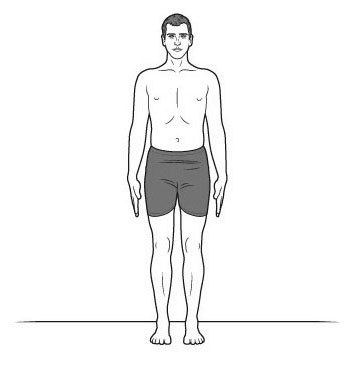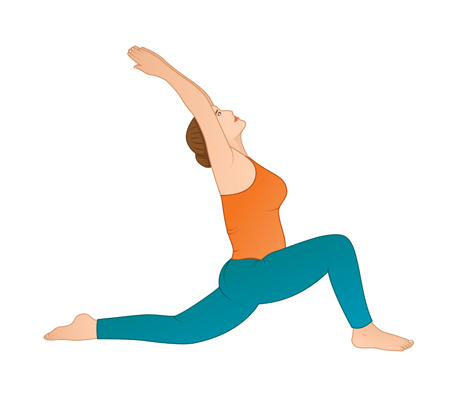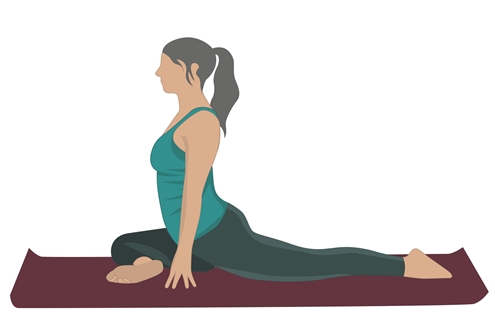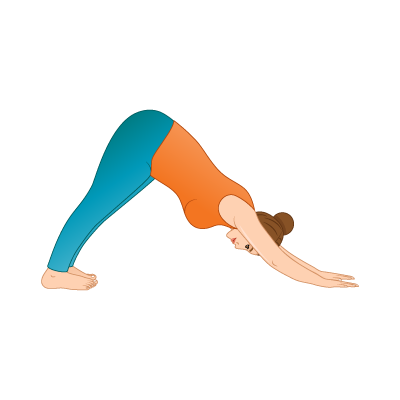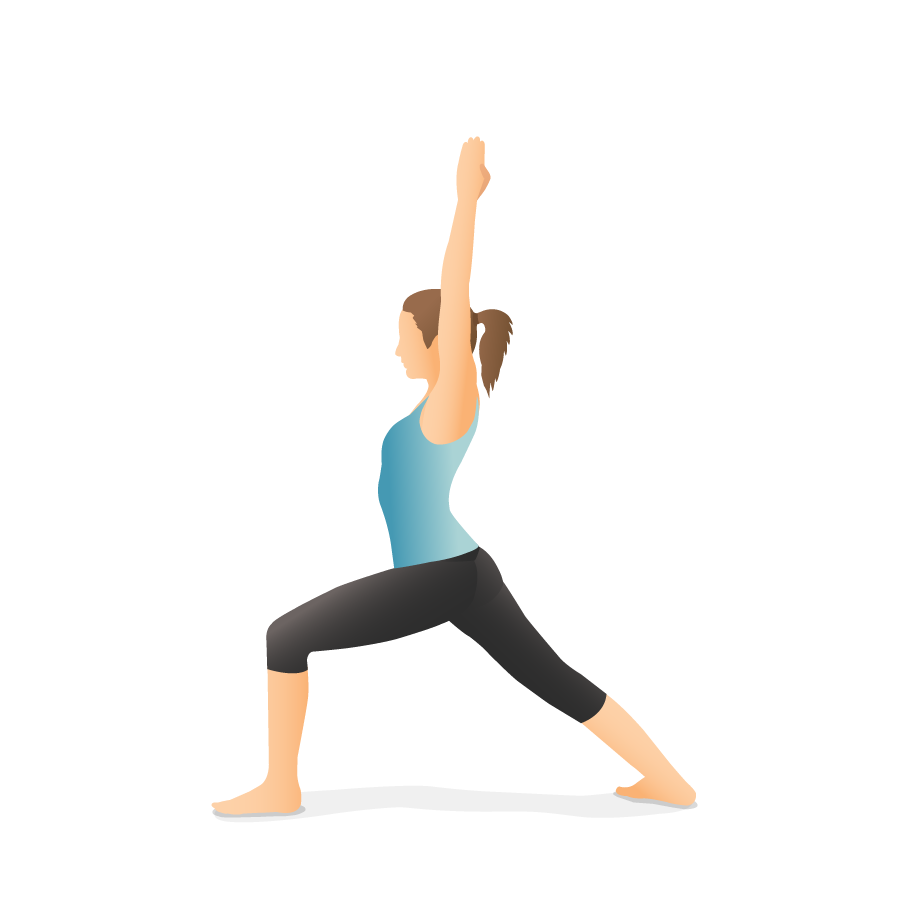Table of Contents
Yoga is an a centuries-old Hindu tradition which means “to engage, to practise, to connect” in its original verb form. However, assuming that yoga was created and hasn’t evolved is incorrect. Actually, the physical aspect of yoga is a relatively new concept, having evolved over the course of 5,000 years into the form that it is now.
It’s never too late to begin doing yoga and experiencing its health advantages. Based on a 2017 nationwide survey, around one in seven Americans practise yoga, a long-standing ancient discipline that offers options for all fitness levels. Although the most difficult poses and inverted forms can be frightening, there are many other forms of yoga that are accessible to practitioners of all ages and fitness levels.
This page is a thorough guide to yoga for beginners.
Get Certified, Get Confident! Join Our Yoga Teacher Training Course!
What Is Yoga?
Yoga is an extensive set of spiritual exercises and methods designed to unite the mind, body, and spirit in order to reach enlightenment or a state of unity with the cosmos. In the West, what is commonly referred to as “yoga” is actually Hatha Yoga, one of the various forms of yoga. Although the various yoga traditions emphasise various methods and approaches, they all ultimately lead to enlightenment and union.
Through the practise of asanas (yoga postures), pranayama (yoga breathing), mudras (body gestures), and shatkarma (internal cleansing), Hatha Yoga achieves the unity of mind, body, and spirit. These physical exercises help to develop prana, or life force energy, and cleanse the body. Many of these esoteric practises are not as prominent in modern Hatha Yoga, which places more emphasis on the physical postures. Even the yoga positions themselves are a great way to exercise your body and mind, regardless of your initial intentions or goals.
Is Yoga Right for You?
1: Which of these is the primary goal of yoga practice?
Yoga is not exclusive in any manner; it does not matter what your age, weight, occupation, place of residence, or religion is to be able to do yoga. Yoga is available to almost everyone.
It can be difficult or risky to practise some styles of yoga, poses, or breathing exercises if you have a medical condition or a recent injury. Generally, you can practise safely with modifications or alternatives, and there are particular yoga therapy solutions for many common complaints.
Before starting yoga, we advise speaking with a doctor or other trained health care provider if you are recuperating from an injury or are not feeling well.
In a yoga stance, you might feel some intensity in your abdominal muscles, but pain should never be experienced, especially in the joints. When you experience a sudden or severe pain, your body is trying to warn you to halt, back off, and relax.
Become a Certified Yoga Instructor
Yoga Teacher Training Course by Entri App: Master authentic yoga techniques, earn certification, and build a successful career as a professional yoga instructor.
Yoga Health Benefits
The advantages of consistently practising yoga are numerous, ranging from enhancing flexibility and strength to assisting with stress management. However, the particular advantages you encounter will vary depending on the style of yoga you practise. The following are a few well acknowledged health advantages of yoga:
Improved Flexibility and Balance
A 2016 study published in the International Journal of Yoga revealed increases in balance and flexibility in a group of male collegiate athletes who did yoga twice a week for ten weeks. Those results are corroborated by a 2019 systematic study, which also confirms that yogis’ lower body flexibility has significantly improved.
Increased Strength and Muscle Tone
A 12-week Hatha yoga intervention for adults was assessed in one study, and the results showed considerable gains in muscular strength and cardiorespiratory endurance. Another study on sedentary people discovered that a Hatha yoga practise improved strength, flexibility, mobility, and other factors just as well as a stretching-strengthening exercise programme.
Enhanced Body Awareness
Yoga’s capacity to link breath and movement via practise has long been recognised as a means of enhancing bodily awareness. A 12-week yoga programme for people with multiple sclerosis dramatically increased their body awareness, according to a pilot study conducted in 2022.
Stress Relief
After just one class, yoga may begin to relieve your stress. A 2016 study’s salivary cortisol test corroborated older people’ reports of feeling less stressed after doing yoga on a regular basis for eight weeks. Furthermore, a 2017 study discovered that after practising yoga for 90 minutes as opposed to resting, middle-aged women released fewer cortisol (the stress hormone).
Weight Management
When paired with a nutritious diet, frequent yoga practise can aid in weight loss and maintenance, according to a 2013 study analysis. A regular yoga practise was found to improve healthy eating, emotional eating management, and even increased capacity for physical activity, according to another 2018 study published in the International Journal of Behavioural Nutrition and Physical Activity.
Injury Prevention
Yoga can be an excellent technique for correcting muscle imbalances and relieving stiffness that may lead to future injuries since it increases flexibility and mobility.
Help with Pain Management
In a 2017 assessment of research, scientists identified yoga as one of the best workouts for reducing chronic pain. Researchers concluded that 20 papers indicated beneficial outcomes for yoga and back pain alleviation in a 2020 assessment of 25 randomised controlled trials.
Manage Chronic Disease Symptoms
In general, regular physical activity can aid in the prevention of a number of chronic illnesses. Regarding yoga, a 2015 study from Massachusetts General Hospital found that thousands of study participants in a year-long relaxation programme including meditation, yoga, and prayer saw their doctors 43% less times than the previous year. Another set of studies from UCLA found that just 12 minutes a day for eight weeks of Kirtan Kriya meditation—which involves finger poses and chanting—helped reduce the inflammatory response of the immune system. This is encouraging because inflammation is linked to almost all major diseases.
Get Certified, Get Confident! Join Our Yoga Teacher Training Course!
How to find a yoga class near you?
The next step is to locate a yoga for beginners class in your area once you’ve determined whether you’re ready to begin practising yoga. Of course, you can search for “yoga class near me,” but the hundreds of results may be too much for you to handle. Furthermore, sometimes Google doesn’t give you the whole picture. Maybe you’re interested in a certain kind of yoga or you care more about quality than distance.
Here’s a quick list to help you discover a yoga class near you:
- Which kind of yoga are you interested in?
- Does the studio have classes geared towards beginners?
- What is the size of the classes?
- Ask the instructor if they will be doing position demonstrations, which are essential for novices.
- To find an outdoor class to attend, check Meetup.
Here are a few other methods to locate yoga sessions in your area.
- Consult a friend.
The advice of a reliable buddy can assist steer you in the correct path. - Join a local yoga Facebook group and make a request.
Yoga instructors are amiable and can provide insightful advice that you might miss. - Examine fitness applications for which you might already have a membership subscription.
You can sign up for individual fitness classes—many of which involve yoga—through the fitness apps Classpass and Mindbody. If you already have a membership and would like to test out some new classes, this can be a nice alternative. Reviews for particular lessons are even provided on some applications. - Try the fitness app Body by Yoga.
Enrol in the Body by Yoga fitness app to get the greatest physical benefit from your yoga classes and experience positive results.
Is your yoga studio beginner-friendly?
When browsing for classes, seek for those that mention “All-Levels,” “Beginners,” or “Introduction.” Choose a class that specifically says it’s for yoga beginners if you want to be surrounded by beginners alone. However, keep in mind that an all-levels class may contain yoga specialists. However, seeing kids who are at a higher level than you, albeit they may not be as proficient as you, can be beneficial. Which option you prefer—taking a class that is specially tailored to your level or enjoying the challenge of seeing others who are more advanced—really depends on your personality.
Look for terms like “hatha,” “yin,” “gentle,” or “slow flow”—these can indicate that the programme is appropriate for beginners and will go at a speed that you can handle.
When in doubt, ask the studio by contacting them. Never presume that you know the level of yoga being taught in the studio, as many different studios have distinct level rankings (e.g., Level 1, 2, and so on, or Level 1, 2, 3). Everyone benefits from having a clear understanding of the class difficulty, and your yoga instructor is interested in knowing if the level of difficulty should be adjusted.
Here are some useful inquiries to gauge the level of difficulty of the class:
- Is this a mixed-level or beginner’s class?
- Will the instructor modify the poses to make them easier?
- Does this class get harder or does it stay the same every week? While it might be a beginner class, you might be going into Class #3 of 10 of a beginner’s series, and it might be better to start at Class #1 instead. This is because some classes are part of a series. The studio will determine this.
You can make a better decision based on your particular set of circumstances the more information you know. If you’re unsure about what a class or other level signifies, don’t be afraid to inquire.
Become a Certified Yoga Instructor
Yoga Teacher Training Course by Entri App: Master authentic yoga techniques, earn certification, and build a successful career as a professional yoga instructor.
What should you expect from your yoga beginners class?
The frequency of your yoga class attendance will determine the kind of outcomes you get based on your personal goals.
You should anticipate leaving your first yoga class feeling calm, maybe a little sore, but generally more flexible than when you arrived. If you’re taking classes at the same studio, you’ll notice that after a few sessions you can execute more challenging postures and that you can follow the flow of the class. As opposed to when you initially started, you should also anticipate having more specific objectives. For example, you might wish to touch your toes and bend more into triangle pose.
It’s common for athletes to include yoga in their weekly training regimens to maintain their flexibility and tone, so you might notice improvements in both these areas. Naturally, these improvements take time, and the more frequently you practise yoga, the more probable it is that your body or level of flexibility will change.
You should know the basic poses and their names by the conclusion of the session, as well as the sequence of the class (including how to greet the teacher at the start and finish) and which parts of your body may require special attention.
Finally, be practical while establishing goals for your yoga journey and consider how many times a week you are willing to devote. What role does yoga play in your exercise regimen?
Yoga Teacher Training – Learn from Experienced Instructors! Get Free Demo Here!
The different types of yoga for beginners
You’ll notice that different class names representing different styles of yoga are there when you browse yoga classes. Actually, some studios specialise in just one kind of yoga, while others provide a variety of yoga courses.
We will go over the most common styles of yoga that you can find on a schedule for a yoga class:
Vinyasa:
The emphasis of vinyasa yoga is on the flow of movements, where various poses are combined to form a series of poses that flow into one another. Since you are constantly switching positions, a vinyasa class is probably going to be quite dynamic.
If you want to focus on coordinating your breath with your movements, want to raise your heart rate, or want to be active during the class, give vinyasa a try.
Ashtanga:
Ashtanga yoga focuses on synchronising posture, breathing, and gaze. This results in a class that follows the same format each time. Beginners may find this class difficult because to the intensity and dynamic movements.
If you want consistency in your classes and are game for a challenge, give ashtanga a try.
Hatha:
Suitable for beginners, hatha yoga consists of simple yoga positions performed in a laid-back setting. Hatha is an all-encompassing phrase that encompasses many different forms of yoga.
If you’re a beginner looking for a mild workout to improve your flexibility, give hatha a try (which you probably are if you’re reading this article).
Hot:
Hot yoga is exactly what it sounds like—a high-temperature yoga style. As such, you should be prepared to perspire when you leave the session. A hot yoga session can include any form of yoga, so make sure to check the description.
If you want to release muscle tension and build up a sweat while staying hydrated, try hot yoga.
Iyengar:
Before moving on to more advanced poses, an iyengar yoga class would emphasise alignment (aligning the entire body, even with supports) and time. Poses are maintained for extended durations.
Here, accuracy is the name of the game. If you want to become more exact in your positions, try iyengar yoga.
Yin:
The emphasis of a yin yoga session is on deep stretches that target connective tissues and joints, which may include the hips.
If you’d like to extend your hips and pelvis, try doing yin yoga.
Your Journey to a Fulfilling Yoga Career Starts Here! Get Free Demo Classes Here!
Different types of yoga beginners poses
Even though there are hundreds of other yoga postures, we’ll start you off with a few fundamental ones that are probably going to be covered in a class for beginners. Whenever you read or study about yoga, you could come across the term “asana” being used to describe certain poses.
It’s a good idea to become familiar with these beginner’s yoga positions since you might encounter them in various class types:
Mountain pose
Standing with the legs extended straight, the feet together, and the big toes touching, is known as the mountain stance. It can be thought of as the foundation for numerous other stances.
Low lunge
All forms of yoga involve a low couch, which is good for your health since it lengthens your spine and strengthens your quads and glutes.
Pigeon Pose
Pigeon position can stretch your back and hips, however it is extremely prone to error. One leg is straight and the other is bowed in this posture.
Downward-facing dog
A well-known yoga practise that works wonders for your shoulders and hamstrings is downward-facing dog. You must be on all fours, place your hands on the ground, and then raise your knees to assume an inverted posture. This is a brief guide.
Warrior 1 pose
When performed correctly, Warrior 1 is a potent stretch for the shoulders and lower back that can also increase general body strength. Stepping forward with one leg bent at the knee, you will place the other leg behind you and raise your hands above your head, gazing skyward.
Tips for yoga beginners
It’s never simple to get started with a new pastime, and before starting anything new, we frequently wish we had a mentor to offer advice. These are the most crucial yoga suggestions for beginners, even though we can’t include them all in one article:
- Perfection exists only in your mind. Don’t be scared to attempt yoga because you’re “too” stiff or that you won’t succeed.
- Don’t let the possibility that you won’t be an expert yoga practitioner deter you from trying. Even if they are not professional or even “good” at yoga, several of the world’s best sportsmen have managed to employ the practise for both mental and physical well-being.
- The secret to success is in the breath. You can connect your body and mind to focus on the stretches and go even deeper when you pay attention to your breath. In tense moments, we often hold our breath. However, yoga encourages you to breathe deeper into a stretch.
Above all, remember to enjoy yourself and not worry about how far you’ve come. You’ll still reap significant health benefits even if those advanced positions never materialise.
Conclusion
Yoga is an excellent approach to improve both your physical and emotional wellbeing. Recall that there is no one “right” or “wrong” method to practise yoga, and that being too rigid for the practise does not exist.
Yoga for Beginners: FAQs
Q1: What is yoga?
Ans: Yoga is a way to achieve both mental and physical balance.
Q2. Can yoga provide fitness?
Ans: In addition to the physical exercise, it includes body awareness, mindfulness, meditation, conscious breathing, and purifying methods.
Q3. What kind of yoga should I start with?
Ans: One of the main kinds of yoga is called Hatha yoga, from which many other forms of yoga are derived. A great way to start would be to familiarise yourself with the names and other fundamentals of yoga poses. Since Hatha yoga is the foundation of yoga, it is best for beginners to learn the basic poses.
Q4. What are the benefits of yoga?
Ans: There are several physical advantages to doing yoga, including improved breathing, energy, and metabolism as well as a more flexible, toned, and strong physique. Yoga enhances posture, pain management, fitness levels, and heart and circulatory health. It also improves your mental health, elevating your mood and promoting emotional stability and happiness. It eases your tension so you can manage it better. Yoga helps you focus your energies and boosts your self-confidence.
Q5. How frequently should I practice yoga?
Ans: Many distractions could attempt disrupt your development and make you practise in short bursts. Practise for 15 minutes straight is considerably superior than doing nothing. Put simply, do what you want to accomplish, but don’t give up. If you adhere to your aim, even lesser servings will work. Remain upbeat and proud of your achievements. Maintaining consistency and being focused will help you quickly achieve the desired outcomes.
Get Certified, Get Confident! Join Our Yoga Teacher Training Course!




